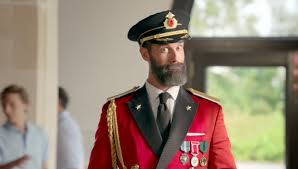Inspire Success with a Dynamic Corporate Leadership Speaker
(This is the final of a 6-part series about the T.R.U.S.T. Leadership Model)
Leadership is the art of finding the motivation of a team of people to act towards achieving a common goal. Although a great leader is willing and able to roll up their sleeves to help get the work done, they are more likely to be the one to provide direction, instructions and guidance for the purpose of achieving a certain goal. An effective leader will know their team members’ strengths, weaknesses and motivations. High-performing leaders typically spread credit for successes and assume responsibility for failures. They know that if the team succeeds, they succeed.
A great leader needs to TRUST their abilities and they need to have the confidence to TRUST their team to do the job they were hired to do without micro-managing them. Great leaders help people reach their goals, are not afraid to hire people that might be better than them and take pride in the accomplishments of those they help along the way. They never stand in the way of someone who wants to advance their career… even if it means losing them to another department…or even another company.
The ultimate compliment a leader can receive is that one (or all) of their team would “run through a brick wall for them” if necessary. The fact of the matter is that it will only happen when the team thinks the same of their supervisor for them. But, what does it take to build this kind of following and loyalty from the team? Consider 3C’s:
Communication
There can’t be any question about the mission of the team. The leader needs to clearly communicate it, reinforce it and provide support and direction to ensure that everyone is focused with their efforts. The leader also needs to be consistent in providing feedback to positively reinforce productive behavior while constructively correcting negative behavior. Many companies use a 360-feedback tool to evaluate how a leader is performing, but if communication is done to the degree it needs to be, then the 360 would not be necessary.
Confidence
The most effective leaders seek information from their people who are doing the work. A good leader isn’t threatened by the experience and the diversity of their team. They recognize and accept that they don’t have all the answers and look to their staff members as experts in their areas. An excellent leader will ask for assistance when necessary and they give the freedom of decision-making and innovation, within the context of their jobs, to their teams
Culture
A great leader creates a culture where team members feel secure. Their team is not afraid of speaking up and challenging the status quo if they feel they have a better way. Individuals are eager to look for opportunities to improve the operations of the business and they know they will be recognized for innovation and not denigrated if they try something new and fail. Great leaders develop a positive atmosphere where each member of their team feels a sense of loyalty to and from their boss because they know he/she has their well-being at heart.
Separately and collectively, each aspect of the TRUST model can be developed and become the foundation of a culture that will bring out the best in everyone.




